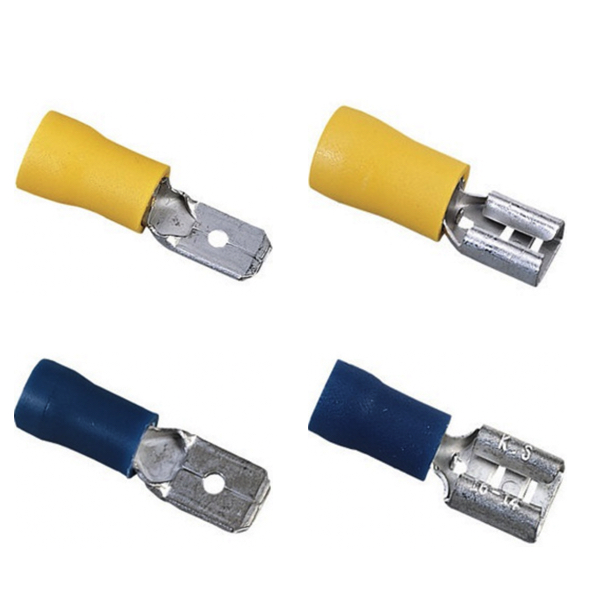
Quick Disconnect Terminals

Fast and simple connection and disconnection of wires in electrical systems are achieved with versatile quick disconnect terminals. They offer the fastest way to connect and disconnect two wires. These terminals are made up of a male and a female part, both of which are essential to the overall effectiveness of the tool. The male and female parts fit together very snugly, creating an electrical connection that is, in many cases, better than an actual wire nut connection. When it comes time to take the pieces apart, doing so shouldn't cause any difficulty, and once the pieces are free, the electrical connection ceases to exist just as quickly as it was initially formed.
Quick disconnects are popular in applications that require frequent connecting and disconnecting, for example, in electronics, appliances, or vehicles. Because these terminals are made to insulate from electrical shock, using them is much safer than using wire alone.
Products
FAQs
What are the most common types of quick disconnect terminals?
The most common types of quick disconnect terminals are male and female spade terminals, often insulated for safety and available in various sizes to accommodate different wire gauges.
What is the tab width of a quick disconnect terminal?
The tab width of a quick disconnect terminal is typically 0.250 inches (6.35 mm), although other sizes such as 0.187 inches (4.75 mm) and 0.110 inches (2.79 mm) are also common for different applications.
Industrial Wiring Tips and Tricks
Wire Type
MTW is typically used in industrial control panels. The flexibility of the wire allows it to be easily maneuvered through wire ducting. THHN wire is commonly found in homes or commercial buildings. The rigidity of the wire makes it easier to pull through conduit. XHHW wire is similar to THHN but provides a more protective insulation.
Wire Color
The National Electrical Code (NEC) or UL are great points of reference when trying to decide what colors of wire to use. For example, UL standard states that a ground wire should always be green, an AC hot or live wire should be black and AC neutral should be white. These are just a few examples of UL code requirements.
Wire Size
A simple rule of thumb when selecting wire size is, the higher the current, the larger the wire. It is also important to consider the bend radius of the wire. If a wire is bent too sharply, the conductors within the insulation can be damaged.
Wire Connection
It is important to make sure that the wire is connected properly and that enough torque has been applied. If enough torque is not applied to the electrical connection, the wire can become loose over time resulting in a poor electrical connection. Too much torque can damage the the wire and electrical equipment.
Wire Labels
Labeling is essential when performing any kind of electrical wiring. Proper labeling will allow others to easily identify the function of a wire, where it is going and where it has been. It can also make troubleshooting on a panel or any electrical device much easier when worked on at a later date.

